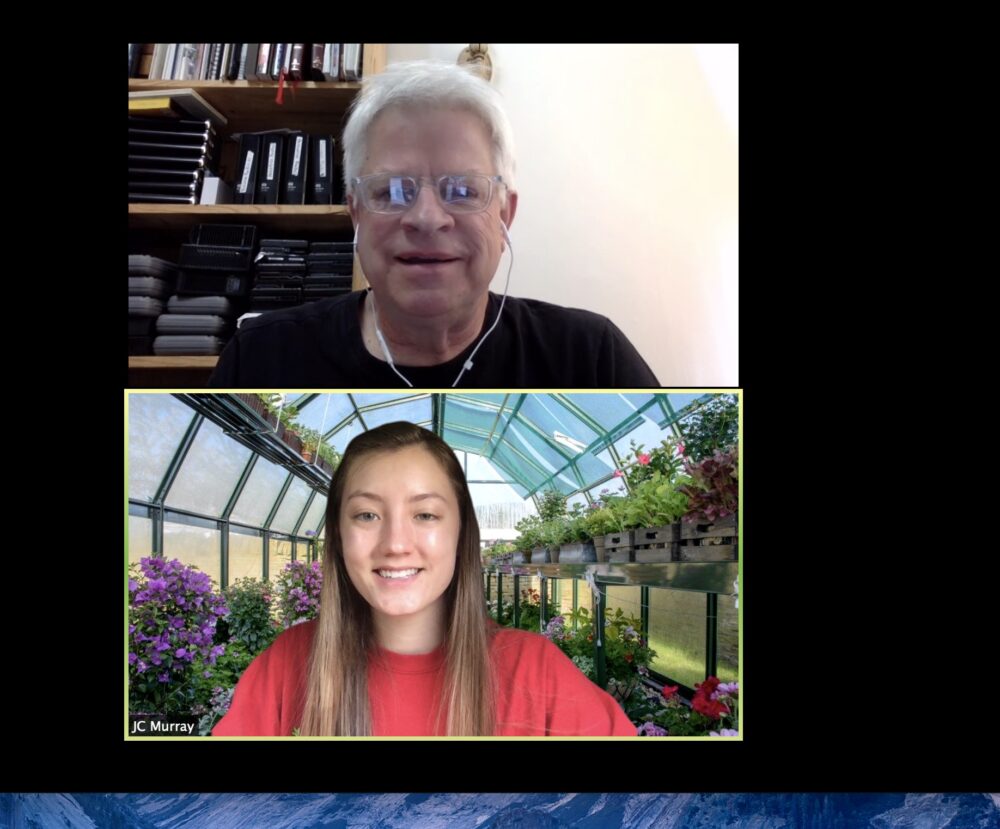By Jim Phillips. In response to the shelter-in-place order that was instituted in California due to the coronavirus pandemic, Jay Olson, divisional liaison for the Humanities Division, Information Technology Services (ITS), brought together a group of UCSC student workers to offer faculty one-on-one assistance in the use of Zoom during their online remote courses for spring/summer quarters. The student workers involved were themselves remote and were unsure of how their campus jobs would be affected by the shelter-in-place order. But, they still needed the hours not to mention the pay that would allow them to make ends meet and continue their studies.
Student Corps Idea
The idea of creating the Student Corps came from Olson, who after discussing the concept with IT leaders in March, quickly reached out to ITS managers and other campus departments to identify a list of student participants.
Olson described the effort as an “agile act of community in response to a crisis.” An example of this agility can be seen in how students took ownership for their own scheduling: Student techs had the flexibility to choose the time slots when they were free to be assigned to work. This was accomplished through a rather ingenious use of Slack wherein Olson and other managers involved could post “jobs” to a Slack channel and students could claim them by a simple response. As jobs were taken, Olson would reformat the initial request in strikethrough so that students would know that that particular job was no longer available.
Students from Across Campus Form Student Corps
In all, 60+ student workers from many campus departments (not just ITS) came together to form the Student Corps. Once paired up with a faculty member, the student techs were then allowed to join the virtual class and help the instructor use Zoom. They also provided just-in-time support to student attendees who experienced technical difficulties during the class meeting.
In many cases, a side benefit became evident: deep partnerships were forged between the faculty member and the student tech. Issues were intercepted before they had an impact on the remote learning experience, and faculty could deliver their courses with more confidence, knowing that help was right there alongside them.
For the student techs, now experts in the use of Zoom, they acquired additional technical skills and gained perspective on how instruction is delivered. They also developed a greater appreciation for what is at stake in the act of teaching and learning.
The Student Corps Program has Received Rave Reviews
Jody Greene, Associate Vice Provost for Teaching and Learning, describes the impact of the effort, “The spontaneous development of Zoom Student Corps has changed the lives of students, faculty, and staff this spring quarter. Jay Olson has kept students employed, kept faculty from having nervous breakdowns, and saved staff from being overwhelmed with help tickets. Jay has been an enormous asset to this campus for two decades and his leadership during COVID-19 has been invaluable.”
The value that this program delivered to campus was enormous and can only be measured in the difference it made for teaching and learning at this historic moment in time when faculty, campus leaders, and support staff had to step up and confront a range of issues (both technical and non-technical) to make remote instruction happen.
Summary
Looking back, Olson summarized the effort, “We had students at risk because they needed work, and we had an instructional delivery problem.” As he reflected on the effort, he expressed gratitude for the managers and supervisors who reallocated their student workers to serve the greater good. For the staff in ITS who assisted in the implementation of this program, it gave them an opportunity to be generous, to directly advance the academic mission, and to engage in collaboration without regard to organizational placement.
Plans are now underway to keep the program in place even after students and faculty return to campus to reclaim their place in the classrooms and resume more traditional teaching and learning practices.
This article originally appeared in UCSC ITS News, June 11, 2020, and is re-posted with permission in the UC IT Blog.
 Jim Phillips is director, Campus Engagement, Information Technology Services, UC Santa Cruz.
Jim Phillips is director, Campus Engagement, Information Technology Services, UC Santa Cruz.







